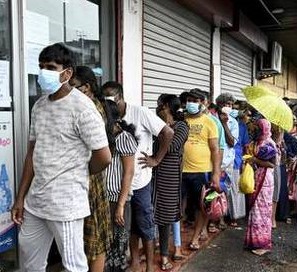The long wait.

Last year feburary Air Marshal Philip Rajkumar (Retd), an 80 years old airforce pilot became the oldest man to fly the indigenous Light Combat Aircraft (LCA) Tejas. When spoken to, he expressed his delight , Not because the retired IAF officer, was the oldest man to fly the Tejas But because he had seen the aircraft mature into a full-fledged operational fighter from the days of the drawing board. As a test pilot, he was in the Tejas hot seat for the fighter’s first 98 flights as the program director of the project way back in 90s.
It was in 1983 that the Government of India, then led by Indira Gandhi, rolled out a project to build a new LCA as a replacement for the Russian MiG-21s. The plan was to carry out the first flight of the new aircraft by 1994. However, the first prototype of LCA flew only in 2001. It was at the time that the then Prime Minister Atal Bihari Vajpayee named the LCA “Tejas”. In December 2013, the Tejas got Initial Operational Clearance and, in 2019, the IAF was given the first aircraft with Final Operational Clearance.
This tells us as to how lengthy, tedious and frustrating is the route to develop and manufacture a sophisticated war machinery indigenously. This is the story of almost all military equipment that India tried manufacturing locally ; the Arjun TANK,the Prithvi, Agni , Akash missiles, the Pinakas, etc .They have taken a long time to reach the customer and sadly the world did not wait for them and by the time they get inducted the technology gets obsolete and the customer once again puts up a fresh demand LIST, after all, the enemies that he has to fight have already moved ahead and are equipping themselves with the latest.
Now that the Cabinet Committee on Security approved a Rs 48,000-crore deal for 83 Tejas, which include 73 Mark 1A versionsNAND 10X mK 1, which will be provided by the Govt managed Hindustan Aeronautics Limited (HAL). Implying each aircraft is costing almost 500 crores. This is over and above thousands of crores already spent on its Development.
It is hell of a lot of money and so as a tax payer, it is our responsibility to evaluate and examine as to how our money is being spent by the Govt and whether the tall claims made by the Govt and its officials meet our security needs. More over, why does Govt owned factories take so much time that may lead to cost escalation and even then no action is taken against the erring manufacturer. Unless the tax payer starts objecting to this gross mismangement , the Govt owned manufacturer will have no concern for the Quality and Schedule of supply.
We must remember that gone are the days when wars were fought in a battle field of few sq kms or on borders, and the citizens could go on doing their job unconcerned about what is happening on the front. With improvement in technology , Today's armed conflicts look quite different: city centers and residential areas can become battle fields. Wars can now move into the lives, cities and homes of ordinary people in a more vicious way than ever before, and impact our livelihoods and occupations.
In view of the above, as regards the Airforce, we as tax payers need to understand following ;
1. What are the Capabilities of IAF and What are the Grey Areas.
Read more ...





